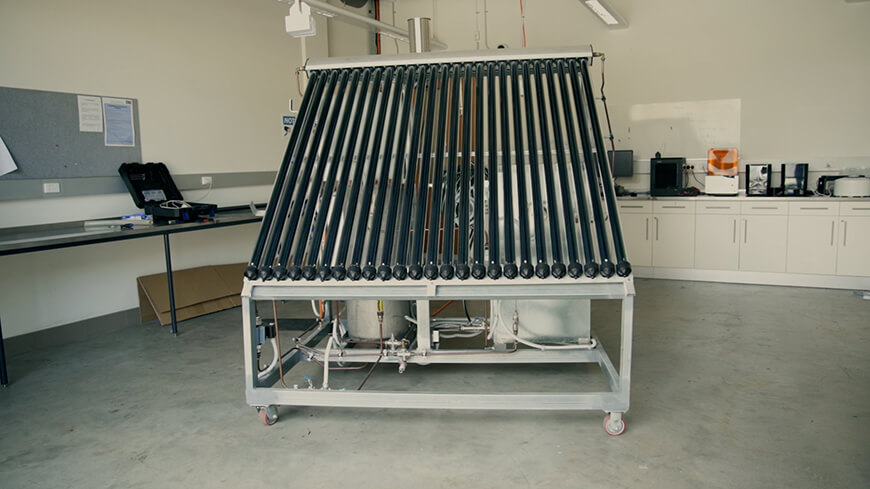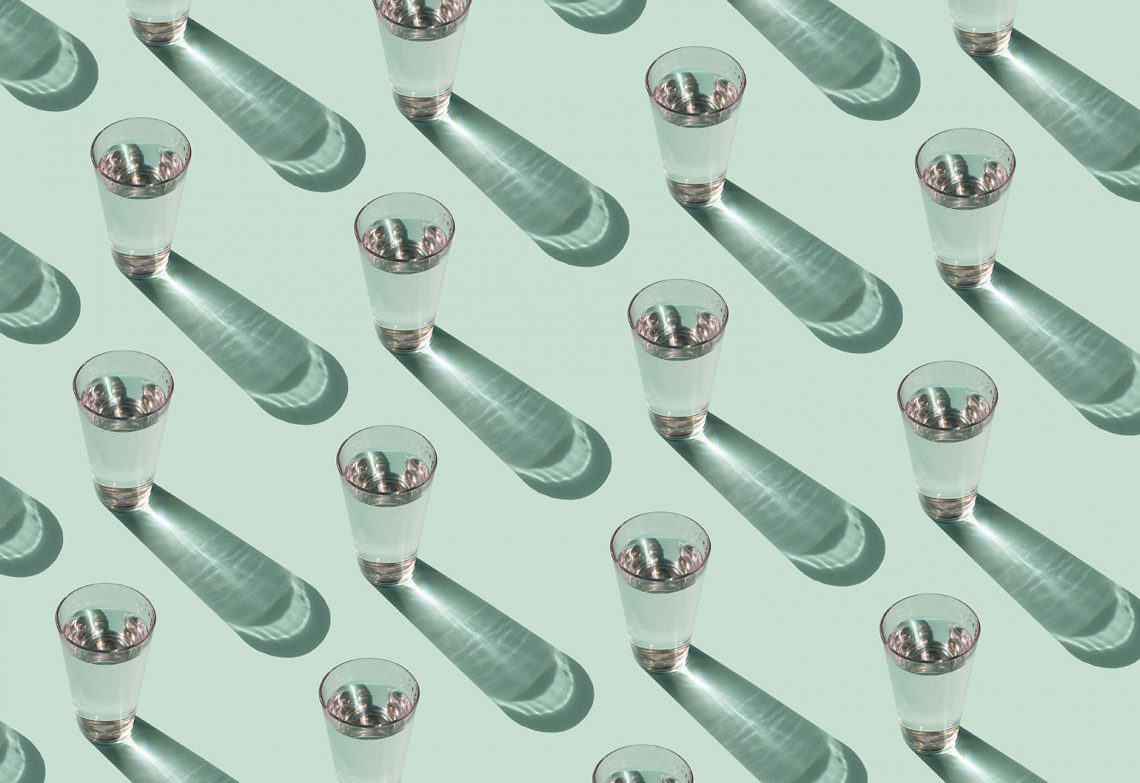A rooftop desalination and water recycling system has been developed in Western Australia, thanks to some surprisingly simple engineering.
Many of us recall as children, perhaps during a scout or cadet camp, creating our own fresh, potable water using only the heat of the sun. We would dig a hole in the ground, pour river or seawater into that hole to soak the soil, then drape a plastic sheet, weighted in the middle with a rock, across the opening.
As the sun warmed the earth within the hole, steam would condense as fresh water on the underside of the sheet. Droplets of water would eventually fill a cup placed inside the hole.
Engineering researchers at Edith Cowan University (ECU) have taken this idea several steps further in an attempt to solve several global social and economic problems. In doing so, they have developed what could well be the world’s first mini-desalination system, powered entirely by the sun and small enough to fit on a residential roof, right next to the solar panels.
“More than five billion people could be facing water shortages in 2050 as a result of climate change, increasing water demand and population growth,” said ECU School of Engineering researcher Dr Abdellah Shafieian.
“Unfortunately, current desalination methods are not a solution as they require huge amounts of energy, resulting in significant carbon dioxide emissions.”
Shafieian’s supervisor, Engineers Australia member Associate Professor Mehdi Khiadini, Associate Dean Research at ECU’s School of Engineering, said events such as World Water Day (22 March) remind us that water solutions are increasingly necessary.
“In our communities and businesses, we are bringing in lots of potable water and converting over 80 per cent of it to waste after a single use,” Khiadini said.
“The idea of recycling water is not new, but we wanted to do it the best way possible. We wanted to bring potable water straight back into the system, whether in urban areas or remote locations.”

Simple engineering
The engineering challenges in creating a rooftop water recycling system were minimal, Khiadini said.
“From an engineering side, we didn’t experience any real problems,” he said. “It was relatively simple.”
The system is mostly powered by the heat of the sun. The only electricity required is to power small pumps that require less than 90W to run. That’s similar to a standard light globe and easily provided by a small solar panel.
Otherwise, solar energy is collected in a series of vacuum heat tubes, each made from two layers of glass, aluminium absorbers and copper heat pipes. These heat pipes transfer the absorbed energy to heat grey water into steam.
That vapour passes through a membrane to a cooling unit where it condenses into drinkable water, with all impurities left on the other side of the membrane.
The system is capable of recycling any household grey water, such as wastewater from washing machines, showers and dishwashers, but not from ‘black water’, or toilet waste. It can also be used to desalinate seawater.
Per square metre of membrane, the self-contained system powered entirely by the sun produces around 20 litres of potable water per day in winter, and up to 30 litres per day in summer. The more water required, the more vacuum heat tubes and membrane can be added.
“In my household of four people, we use 700 to 800 litres of water a day,” Khiadini said.
“For drinking or cooking, about ten to 15 per cent of that should be drinkable water.”
Khiadini’s household, then, would require five to six square metres of membrane to provide for their high-quality potable water requirements, year long. This size of the membrane is held in small cylinders that can be located closer to the source of the water needing to be treated, or elsewhere.
Where to next?
Khiadini has no doubt the system will be developed into a commercial product.
“We are still continuing our research to enhance water productivity,” he said.
“But in terms of the overall concept, this should not make a significant difference.
“As we progress to the next phase, investment will be important to commercialise the system, introduce it to the public and educate people around the fact that it’s similar to having solar panels on your roof.
“I can assure you that in the near future, we will have a system for recycling water, one that is purely dependent on solar energy. It is a perfect, simply engineered, local solution that helps solve a global problem.”




Interesting read . I have a decommissioned Smalls solar hot water tank in my roof (gravity fed) and the original solar panels for that system still on the roof. Would I be able to use these items with modification of course to enable the system you are advising . Would you like a set up such as this for a research project . Can’t hurt to ask ..
Does the membrane become clogged … I assume so. In a seawater desalination application how does it work, is the membrane just washable in seawater if I install this on a yacht?